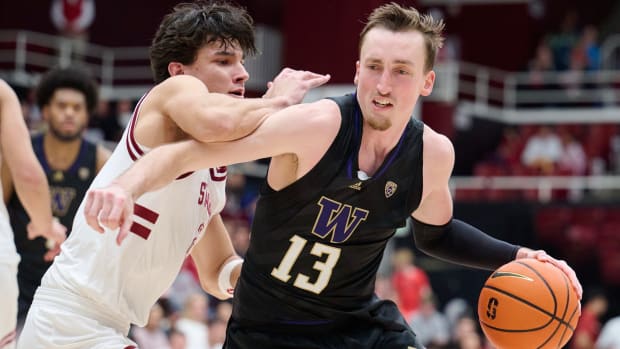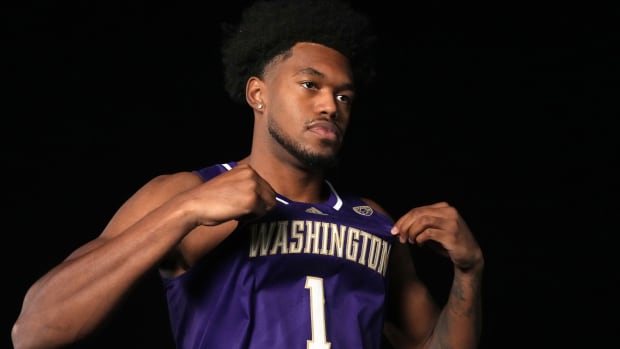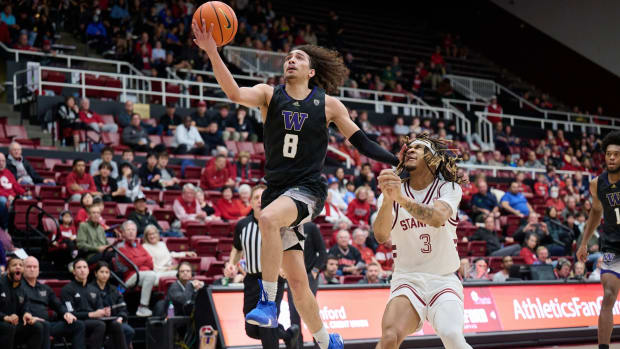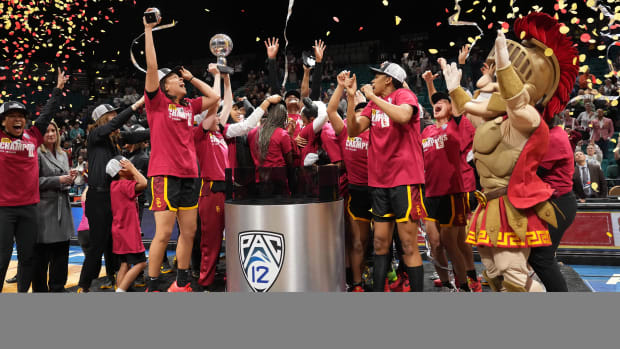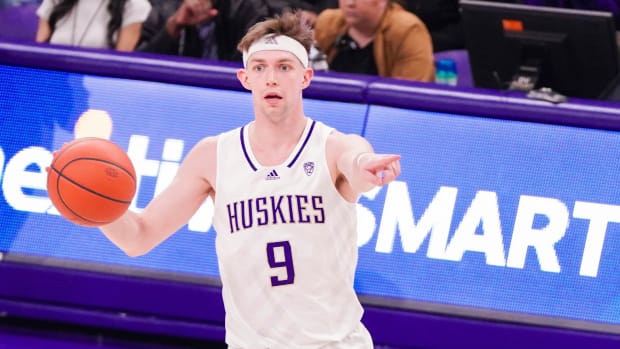Green With Envy: Here's How UW Point Guard Was the Difference
Where would the Seattle Seahawks 2019 season have been without Russell Wilson? Not have been in contention for a playoff spot. As the guy who handles the ball the most, Wilson makes the players around him better. The same was true for the Washington Huskies and point guard Quade Green.
The Huskies' regular season was a tale of two halves. The Huskies were competitive and dropped highly regarded Baylor to begin the season and next lost 14 of 17 games.
Washington continually wilted late in games without Green's play-making ability. The Huskies showed an inability to close out games, especially during a nine-game losing streak. The UW's lack of leadership down the stretch was evident.
It became a punchline for color commentator Bill Walton, who quipped that Washington would be a top 10 team in the country if games were only 35 minutes long rather than 40.
Green's ability to distribute the ball keyed Washington's rise to an 11-4 record, with the team sitting just outside the top 25 when he was suspended. In the UW's first 15 games, he led the team in assists 10 times, including the final seven of eight games he played. An 11.6-point scorer, he averaged just over five assists.
Green's points and his ability to take the pressure off of McDaniels and Stewart weren't replaced. One reason for UW's decreased offensive productivity was not having Green cutting through the middle of the opposition's defense. When he drove to the basket, that pulled defenders away from Stewart.
The freshman big man saw his scoring drop noticeably in 17 games without Green. Stewart scored 20 points or more just three times without the point guard.
Stewart led Washington in scoring in 10 of 15 games to begin the season. He went over 20 points six times. Additionally in that time, UW's leading scorer, whoever it was, scored 20 or more points 10 times. In the final 17 games, the Huskies' top scorer reached 20 just 4 times.
Another reason for the UW struggles post-Green was having to rely on Marcus Tsohonis. The true freshman became a starter with no warning. He hadn't sniffed playing time. He wasn't expected to play this season. He wasn't even given starter minutes in practice until the day before the Huskies took on Stanford in Palo Alto, California.
Green had pulled 60 games under his belt between Kentucky and the UW when he went out. Tsohonis had nearly zero minutes. The transfer was at his best against the bests, supplying the UW with 9 assists against Baylor and 8 against Gonzaga.
Tsohonis led UW in assists four times after taking over for Green. In fact, seven different Huskies led the team in assists over those final 17 games. Hameir Wright and McDaniels each led four times, Hardy and Stewart twice, and Carter and Bey once.
Only once did one of the UW players provide 6 assists. Green, on the other hand, had eight games of 6 assists or more. In six of the final 16 games, the Husky big men, Stewart and McDaniels, led the team in assists.
Opposing teams double- and triple-teamed Stewart in the paint, but they still were able to make the UW turn the ball over at a high frequency.
Now the Huskies either convince Green to come back as a junior and calm thing down or they goes out and find another playmaker. They can't suffer through another backcourt calamity like this one.
The UW might have been good for 23-24 wins (Kaila's video here sized up the Pac-12 tourney opener) had it kept Green in the lineup, though, of course, pandemic fears would have made everything moot for the postseason.
